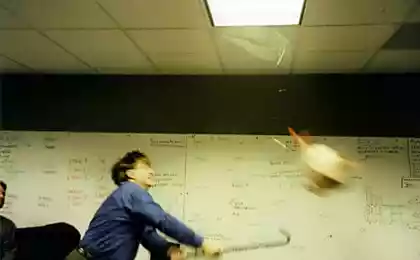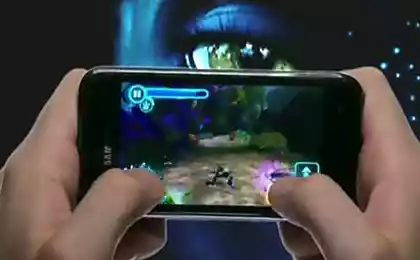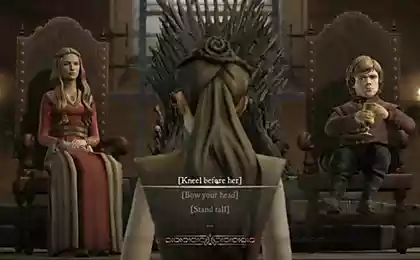928
The development of artificial intelligence game methods
The complexity of the human brain is impressive in itself, but if we assume that the body determines a person has reached the peak of this development through the generations, that fact is even more stunning. Neuroscientists, by new kinds of research, learn more about the brain every day. In particular, at the Medical University of Wisconsin-Madison, researchers are studying how to develop neural networks, teaching computers to play video games.

The team describes how they have created a simple system, called «Animat» and monitored their changes through the generation of the article «Evolution of Integrated Causal Structures Animats Exposed to Environments of Increasing Complexity »(" The development of complex causal animat structures in environments with increasing complexity "). Using a process not unlike a natural development, the research team studied as artificial intelligence becomes more complex, in the hopes that the findings could better explain the complexity of our brains.
Each "animat" had two sensors, two engines and four internal computers to coordinate memory, movement and sensation. For these basic nervous systems identified the problem with the game puzzle game where the goal is to catch the blocks falling from the top of the screen. Thus, each "animat" would have to learn how to determine which block to land for the successful completion of the action. In view of the further development of analogies, coding "animat" could also randomly modify the system and make some better than others. In this case, these researchers successful system copied and transmitted on to achieve a desired result. Digital natural selection, so to speak.
The team has also increased the complexity of the game to match the growing complexity "animats" and provoke their further development. After more than 60,000 generations of systems, moreover, that the descendants adapted to more complex tasks, they have become more complex. Once their basic neural networks have now become much more complex, creating more connections to make up for the limited size of brain size. And this experience has left not far from the result that today is our complex human brain.
"Animat" and their intelligence is not getting bigger, but they are integrated for better functionality and efficiency. The team says their experiment demonstrates why and how the process works called "integrated information theory." In fact, himself, Mr. Tono suggested that this theory is based on the nature of conscious organisms adapt to mental problems in the same way as the physical - by changing yourself.
not as interested in the translation of a brief review, оригинал work Mr. Tono and his team.
A translation prepared for you from the project developers VirCities - sign up for the alpha test! I>
Source: geektimes.ru/company/ilkfinkom/blog/246678/

The team describes how they have created a simple system, called «Animat» and monitored their changes through the generation of the article «Evolution of Integrated Causal Structures Animats Exposed to Environments of Increasing Complexity »(" The development of complex causal animat structures in environments with increasing complexity "). Using a process not unlike a natural development, the research team studied as artificial intelligence becomes more complex, in the hopes that the findings could better explain the complexity of our brains.
Each "animat" had two sensors, two engines and four internal computers to coordinate memory, movement and sensation. For these basic nervous systems identified the problem with the game puzzle game where the goal is to catch the blocks falling from the top of the screen. Thus, each "animat" would have to learn how to determine which block to land for the successful completion of the action. In view of the further development of analogies, coding "animat" could also randomly modify the system and make some better than others. In this case, these researchers successful system copied and transmitted on to achieve a desired result. Digital natural selection, so to speak.
The team has also increased the complexity of the game to match the growing complexity "animats" and provoke their further development. After more than 60,000 generations of systems, moreover, that the descendants adapted to more complex tasks, they have become more complex. Once their basic neural networks have now become much more complex, creating more connections to make up for the limited size of brain size. And this experience has left not far from the result that today is our complex human brain.
"Animat" and their intelligence is not getting bigger, but they are integrated for better functionality and efficiency. The team says their experiment demonstrates why and how the process works called "integrated information theory." In fact, himself, Mr. Tono suggested that this theory is based on the nature of conscious organisms adapt to mental problems in the same way as the physical - by changing yourself.
not as interested in the translation of a brief review, оригинал work Mr. Tono and his team.
A translation prepared for you from the project developers VirCities - sign up for the alpha test! I>
Source: geektimes.ru/company/ilkfinkom/blog/246678/
Bond. James Bond. Robotic fake handwriting for marketers and social engineers
Intel revealed plans to conquer 10 and 7 nm























